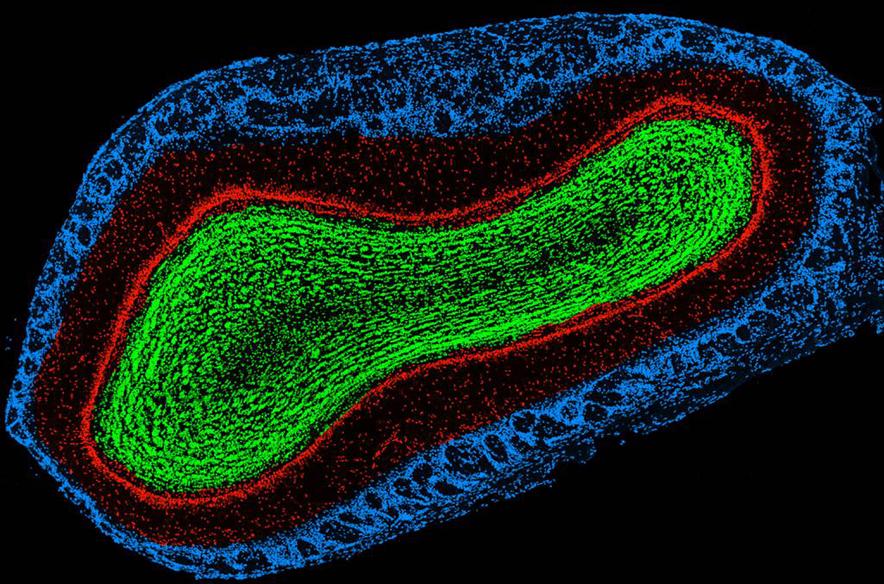From the sweet aroma of vanilla to the earthy scent of grass, smells are familiar sensations for humans and animals alike. But despite its everyday nature, the sense of smell and the nature of smell-sensing receptors have long been an enigma for scientists.
Researchers have now created a new technique that allows them to study smell-sensing receptors and match them with their corresponding smells in the lab, with more ease and sensitivity than was previously possible. The results were published in the August 9 issue of Science Signaling.
Their technique uses genetically modified mice to isolate receptors that sense odor chemicals in the human nose. It was as much as 100-fold more sensitive than previous approaches, suggesting it could help scientists decipher how neurons in humans, and potentially in other species, respond to odors.
The researchers also speculate that their smell-deciphering platform could one day be used in various health applications, such as treating smell disorders or creating odor-based sensors for certain diseases.
A FAMILIAR AND YET ENIGMATIC SENSE
Most odors are recognized by molecules called odorant receptors, which line the surface of smell-sensing neurons inside of the nose. Odorant receptors help produce smell signals in the nervous system by binding to odor chemicals inhaled from the environment.
Humans have around 400 genes that code for odorant receptors, which typically respond to a few thousand odors, according to Paul Feinstein, professor at Hunter College in New York City and senior author of the new study.
Despite more than 30 years of research, it’s been hard for scientists to figure out what each odorant receptor does and what specific odors it matches with or helps sense, Feinstein said.
Odorant receptors are very difficult to study in the lab, outside of their native environment in the nervous system. Researchers have tried to generate odorant receptors in artificial cell lines, but most efforts haven’t produced enough of the receptors in lab-grown cells, according to the study.
“These genes or proteins that they make for some reason, and we still don’t understand 30 years after they were discovered, can’t be analyzed in a laboratory setting,” Feinstein said in a related Science podcast . “This has been crippling to the field.”
It’s also tricky to study odorant receptors in animals such as mice. In the 1990s, scientists found that they could insert specific odorant receptors into the genomes of mice and into their smell-sensing tissues, according to the podcast.
However, each type of smell-sensing neuron represents only a tiny slice of the 10 million neurons in the smell-sensing tissues of mice. Scientists lacked research tools that could quickly isolate and analyze odorant receptors from this vast field of neurons, making in-depth research quite labor-intensive.
TRACKING DOWN SCENTS FOR ODORANT RECEPTORS
In their study, researchers led by Feinstein and Masayo Omura, a principal scientist at Hunter College and lead author of the new study, set out to create new lab techniques that can more easily isolate human odorant receptors.
Inspired by previous work in the 1980s, the researchers turned to cilia, which are hair-like extensions that protrude from cells. Cilia contain odorant receptors and all of the other major molecular components that help sense odors, and they can be easily examined in the lab with traditional tests.
Omura’s team discovered that they could isolate cilia from mice that have been genetically modified to express human odorant receptors in their smell-sensing neurons. Using commercial lab kits, the scientists could then break open the cilia to see what types of odors stimulated their odorant receptors.
To test their system, the team isolated cilia bearing two human odorant receptors called OR1A1 and OR5AN1 from the modified mice. They then exposed the cilia to a range of odor vapors and measured signaling molecules to find out which odors triggered their odorant receptors.
The OR1A1 receptor responded to (−)-carvone, a chemical found in dill and spearmint plants. It responded even more strongly to MND, an organic compound that has previously been studied in the flavor of red wines. The team also found that OR5AN1 reacted to muscenone , a chemical with a strong musky odor.
PLATFORM’S ADVANTAGES MAY LEAD TO HEALTH APPLICATIONS
The platform’s isolated receptors were 10- to 100-fold more sensitive to odor molecules than observed with previous studies, as they detected much smaller concentrations of the scents. The system can also produce as many as 4,000 testing wells worth of data with one mouse.
Another advantage of the system is that it configures the odorant receptors and their respective signaling molecules in their native cilia, placing them into a more natural environment for research when compared with artificial cell lines.
The isolated cilia can also be frozen and maintained for as long as 18 months for follow-up studies, Feinstein said. This would allow scientists to use cilia from one mouse for hundreds of experiments, while artificial cell lines must be regrown for each experiment.
“With the full analysis of human odor receptors, we could finally correlate odor descriptors with individual odor receptors,” Feinstein said. “Such data would allow us to decode how odor perception is determined.”
He added that this system could help scientists to understand how to block specific smells or alter the perception of some odors. This approach could be helpful for people suffering from altered smell perception after COVID-19 infections, he speculated.
Another health application could involve using the technique to study skin and urine odors associated with certain diseases. Feinstein noted the example of a “super-smeller” who could distinguish an odor specific to patients with Parkinson’s disease. A future version of the smell-based platform might be able to similarly detect such odors during the condition’s early stages, he theorized.
[Credit for related image of mouse olfactory bulb neurons: NIH]













